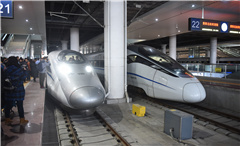Development of China’s transport network
2016-12-29
Xinhua
BEIJING — China on Dec 29 issued a white paper on its transport network, reviewing the sector’s tremendous changes in past decades and setting goals for its further expansion in coming years.
Following are some facts and figures about the country’s transport network.
— Railway
China has witnessed booming railway construction during the past decades. By the end of 2015, China’s operational railway line reached 121,000 km, ranking the world’s second; it had the world’s longest high-speed railway network, totaling 19,000 km by 2015.
By 2020, China would increase the length of high-speed railways in operation to 30,000 km, connecting more than 80 percent of its big cities.
— Highway
The length of China’s highways continued to expand. As of the end of 2015, China’s highway traffic length amounted to 4.58 million km. The country ranked top of the world in expressway construction, which totaled 123,500 km at the end of 2015.
— Civil Aviation
China had 210 civil transport airports by 2015, among which 26 having annual passenger throughput of over 10 million and 51 having an annual cargo and mail throughput of over 10,000 tonnes.
— Ports
At the end of 2015, the ports of China had more than 31,000 quay berths for production use, and number of quay berths at 10,000-tonne level or above reached 2,221.
— Oil and gas pipeline
By the end of 2015, the length of China’s onshore oil and gas pipelines totaled 112,000 km, forming a trunk-pipeline network for crude oil, refined oil and natural gas.


